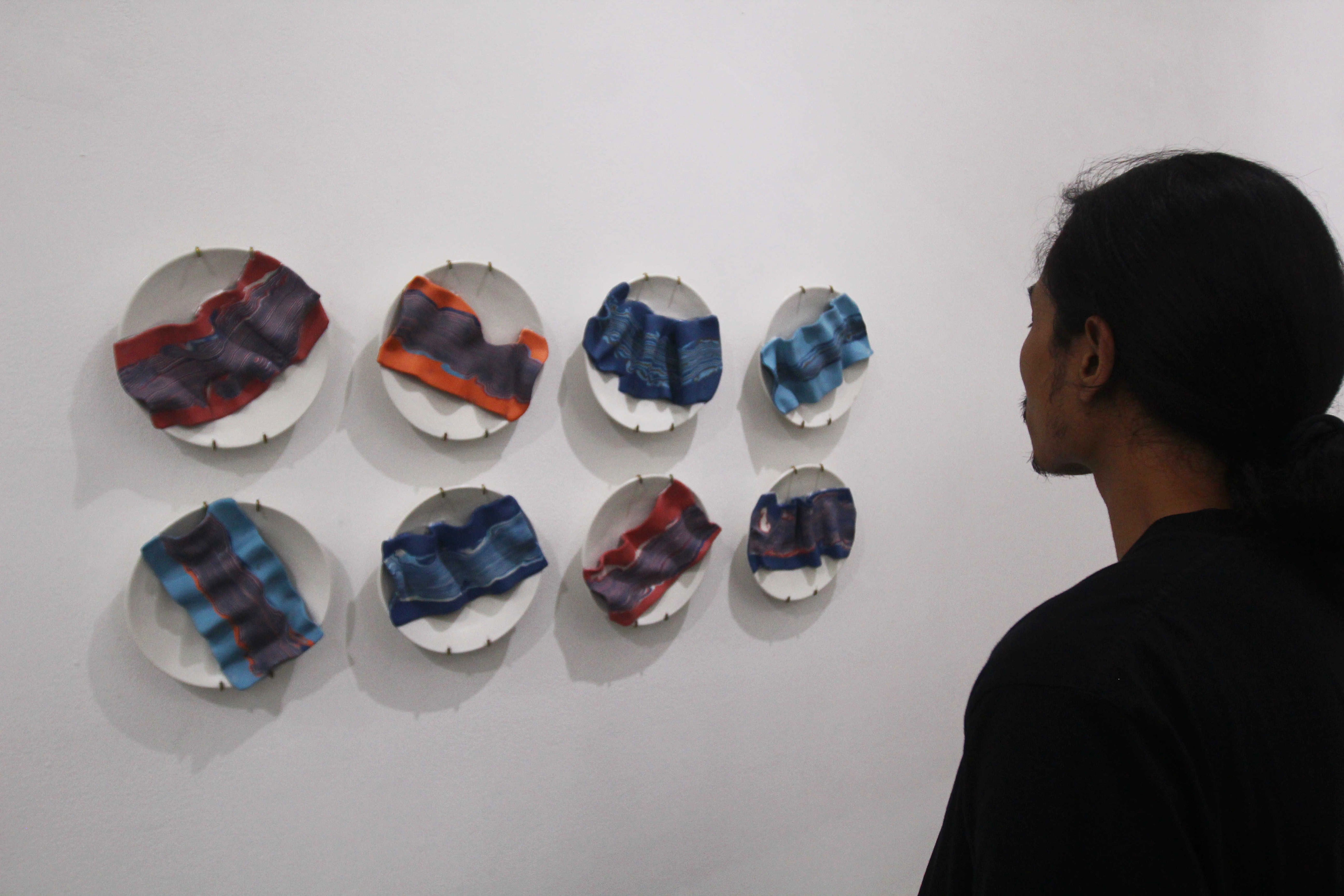Judul : Nerikomi Exhibition: Attractive Brightly Colored Ceramics
link : Nerikomi Exhibition: Attractive Brightly Colored Ceramics
Nerikomi Exhibition: Attractive Brightly Colored Ceramics
People's Thoughts - Sasanti Puri Ardini conducted the exploration of techniques for making ceramic art. Using the nerikomi technique, Puri created ceramic works combining common forms, such as containers based on cylindrical shapes, flower vases, and plates. Puri's works are presented in a solo exhibition titled "Nerikomi Memetika" at Galeri Ruang Dini, Jalan Anggrek, Bandung City, from June 20 to July 13, 2025.
In making ceramic art using the nerikomi technique, a ceramic artist must mix two or more coils of clay or earthenware. Then, apply different colors, and combine them to create decorative elements, which are then fired in a kiln.
This technique most often uses colored designs or patterns applied in circular, marble-like, geometric, mosaic, or naturalistic styles. Clay coloring is usually done through oxides or stain pigments in the form of special color powders. The type of clay material and the degree of maturity during firing in the kiln greatly determine the final result, including the desired brightness of the color.
Curator Rifky Effendy explained that nerikomi, sometimes called neriage, is a decorative method and technique for ceramics or earthenware that was popular in Japan. This technique became popular between 1978 and 1995 in Japan, due to a coffee advertisement using nerikomi cups and mentioning the term neriage.
Quoting the ceramic artist and academic Nurdian Ichsan, clay as the basic material of ceramics is an ancient material that has been a medium in human life since the pre-modern era. Clay is a "real" material that humans are physically involved with through hands and fingers, even further, the body.
Clay is also sensual. It is warm, soft, and smooth when wet. Therefore, clay is an experimental material or a material that can only be understood based on direct experience and observation.
"Specifically, clay media and materiality offer ease in imitation. Similarly, Puri explores the properties of clay material, especially its flexibility and malleability. Puri uses the nerikomi technique with bright colors and more than two colors, thus requiring precision throughout all stages of the process," said Rifky.
Nerikomi
Rifky mentioned that Puri's works in the exhibition have a unique style with bright and eye-catching colors. Especially in the works that form folds and tangles, like fabric materials adhering to and wrapping around the shapes of those objects.

In its development, Puri only focused on the formation of element arrangements or folds attached to the wall. This change, according to Rifky, might be an attempt to free itself from the constraints of these objects. In other words, is Puri trying to free itself from 'kriya' that has been associated with its ceramic practice so far?
"This change presents a particular challenge for Puri. In addition to requiring specific technical skills, the exploration of neri-komi also requires the ability to develop ideas that lead to values within the framework of contemporary visual arts practices in general," said Rifky.
Sasanti Puri Ardini mentioned that the clay she works with resembles sheets of fabric and flows. According to Puri, as a material, clay has flexible, supple, and easily moldable properties. These characteristics, says Puri, she analogizes to fabric, supple and flexible although with certain limitations. The forms of fabric made from clay, says Puri, are sometimes left hanging freely, while others adapt themselves to the shapes of flat and voluminous containers.
"My clay heart is like ourselves, flexible, adaptive, and dynamic. Meanwhile, other objects that support it represent the environment and situations that shape us," said Puri. ***
Demikianlah Artikel Nerikomi Exhibition: Attractive Brightly Colored Ceramics
Anda sekarang membaca artikel Nerikomi Exhibition: Attractive Brightly Colored Ceramics dengan alamat link https://www.punyakamu.com/2025/07/nerikomi-exhibition-attractive-brightly.html
0 Response to "Nerikomi Exhibition: Attractive Brightly Colored Ceramics"
Post a Comment